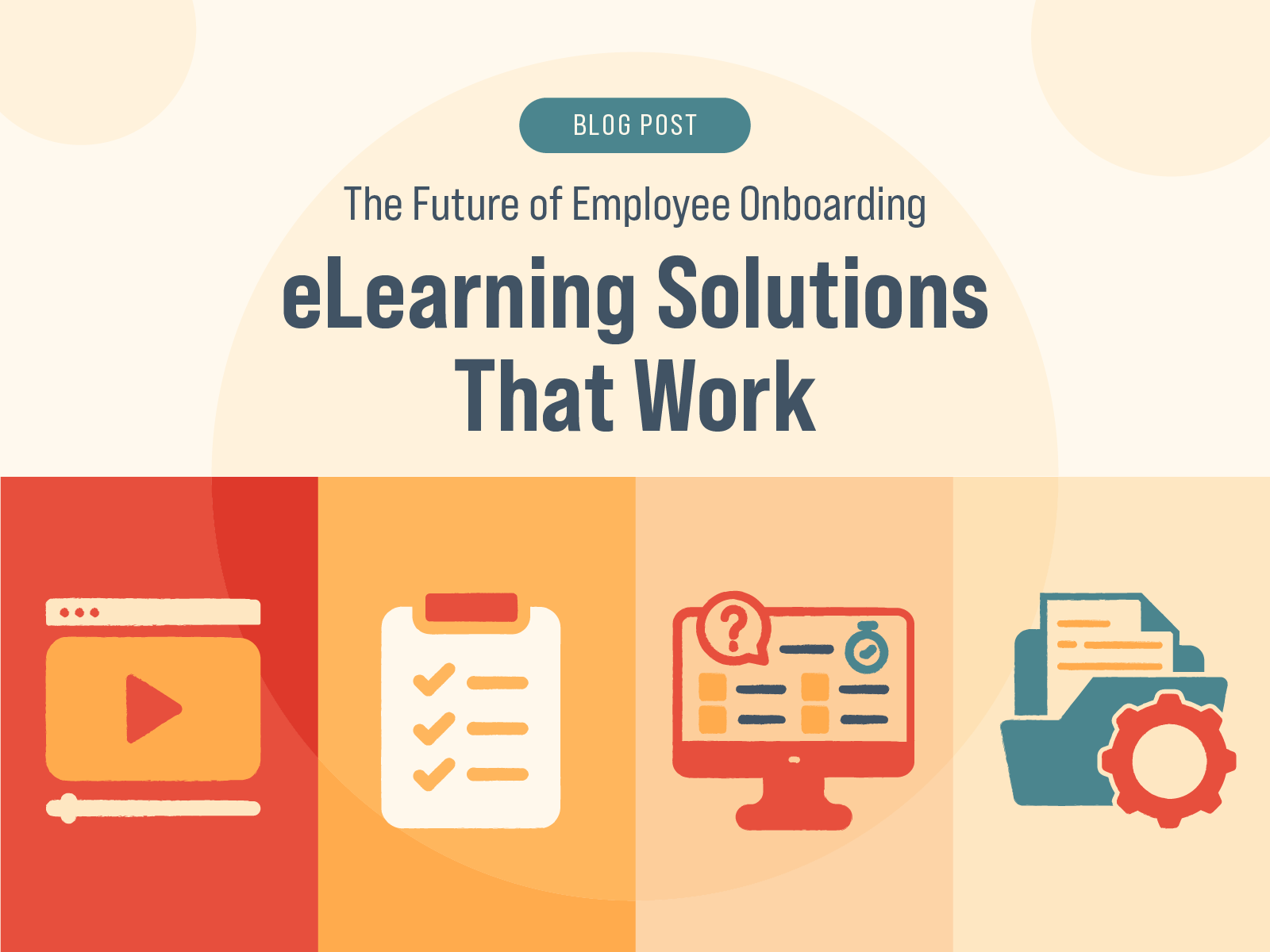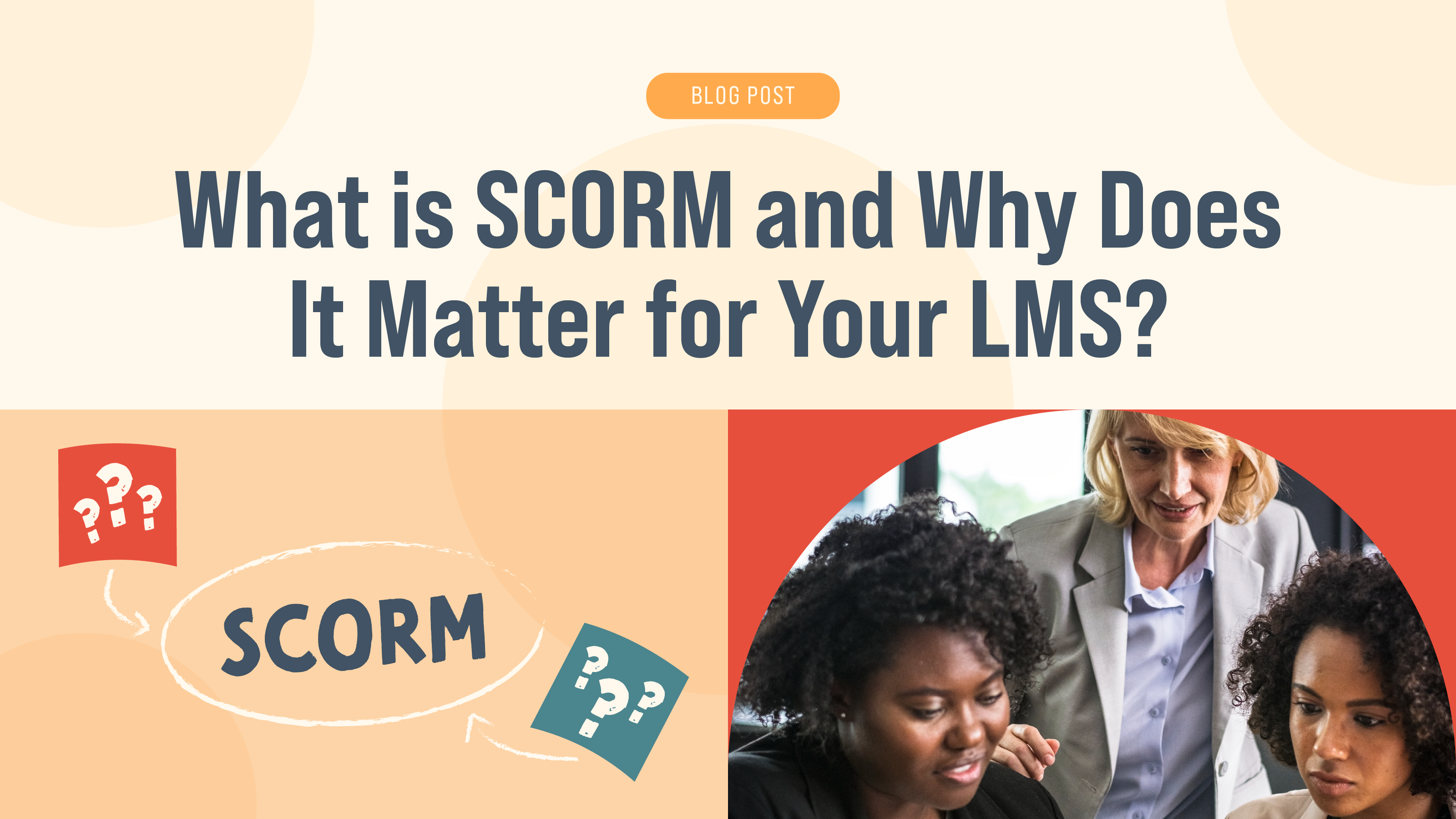How to Effectively Use Videos in eLearning
There’s no denying that videos for learning are the present and the future. Online education videos aren’t only cost-effective, but they’re also an incredibly impactful way to teach a vast range of subjects. But putting together the right eLearning videos involves a thought-out process with many moving parts. We’ll explore the benefits of videos in eLearning and how to create engaging, tailored content for your audience.
Why You Should Use Videos in eLearning

Before we jump in, let’s examine why video learning is better than other more traditional types of learning. Here are five benefits of eLearning videos.
The Go-To Resource for Learning (Inside & Outside of Work)
Videos are a very effective learning tool that many of your employees likely already utilize. Whether they’re looking up YouTube videos to understand how to fix a clogged drain or they turn to videos to help train their new puppy, your employees likely already rely on video. By providing your employees with workplace videos, they’ll naturally gravitate toward watching them as it already feels natural.
Keeps People Learning for Longer
Once you get the format and content right in your videos, they will be an excellent way to engage your audience for an extended period of time. Each custom eLearning course has endless amounts of creative potential with limitless possibilities. You can incorporate interactive elements such as quizzes, animations, storytelling devices, games, and so much more. Learning will no longer feel like a chore and instead, it will be engaging and exciting.
Easily Shareable
Did you know that approximately 1 million YouTube learning videos are shared every day? Video learning courses make it easy to share knowledge with others in a few simple clicks. Your videos can be shared with onboarding employees, current employees, or employees who want to brush up on certain skills.
Learn by Showing, Not Telling
Video content gives life to “how-to” concepts that may be difficult to explain. Videos are an excellent tool for visual learners who like concepts to be demonstrated in an appealing way. In fact, according to research, when it comes to instructional learning, people respond better to visual guidance than they do to written information. This is true even if both formats have the same words and order of information.
Different Types of eLearning Videos

Different people learn in different ways. Now that we’ve covered the many eLearning video benefits, let’s delve into the different types of videos that exist to meet a range of learning types.
Storytelling Videos
Video-based eLearning often comes in the form of storytelling videos. As stories help us process and retain information, it’s only natural for them to help facilitate an emotional connection to new information. By intertwining storytelling techniques with your eLearning videos, you appeal to learners who may have had a negative learning experience in the past.
Storytelling eLearning videos are particularly useful for circumstances where customers need to become familiar with a new product or tool. It helps to hook them into the information and create buzz surrounding the new tool. Make sure to strategically follow up with learners at timed intervals to keep their interest ignited.
Talking Head Videos
Another popular type of online learning video includes talking head videos. It is ideal for assisting with visual and social eLearning and it is incredibly easy to produce. The most successful talking head videos simply require an interviewee or a subject matter expert (SME) in addition to a camera.
Many learners gravitate toward watching other humans as opposed to simply reading text on a screen or listening to cookie-cutter voiceovers. Aim to implement this type of eLearning video for microlearning, or for short, digestible clips of information. Companies also use talking head videos as part of their onboarding process to help new employees feel connected and part of the culture.
Voiceover Videos
Consider another approach to your video-based eLearning: voiceover videos. This type of video is very effective and familiar to many learners and occurs when there is solely a voice that narrates the material without showing the speaker. Voiceover videos are often paired with enticing images and sounds to convey information in an engaging way. These types of videos are ideal for team presentations, explaining your core values or as a tactic to show learners how to use a tool.
Animated Videos
Animated videos for learning are similar to grown-up cartoons to convey the material in a fun, engaging, and approachable manner. Whether you are trying to convey information to college grads or to company executives, you can utilize animation to effectively convey new information. Although these types of videos may feel informal, they are suitable for complicated subjects that are difficult to address. You can even use the same animated characters throughout multiple videos to build familiarity with your audience.
Instructor-Led Videos, Demos, and Simulations
eLearning videos don’t need to be complicated to be impactful or memorable. Instructor-led videos, demos, and simulations can even be more effective than in-person training experiences as they allow users to playback the information as many times as necessary. These types of videos also utilize different camera angles to reinforce the new information to learners. Aim to create these eLearning videos for product demos, technical eLearning programs, and to convey procedural knowledge.
Learner-Generated Videos
The more you empower your employees to generate video content of their own, the better off your organization will be. By promoting this culture, you help encourage employees to become informal trainers of their own, forcing them to learn the information in order to successfully teach it. Learner-generated videos are also a form of social learning that can be equally as impactful as more structured training efforts. It also encourages a community of curiosity, empowerment, and engagement.
How to Create a Successful eLearning Video

Now that we have discussed the different approaches to create eLearning videos, let’s examine how to make eLearning videos of your own. Below is an example of a course creation process.
1. Define Your Goals and Target Audience
The consumers who will be interacting with your video content should help drive the strategy in how you present them with the information. The more enticing you can be to your target audience, the higher your engagement rate will be. Make sure to create goals surrounding the videos as well so you have a clear understanding of whether or not the material is successful.
2. Script and Storyboard The Content
Next comes the more creating part of the eLearning video creation process. You’ll want to consider the type of eLearning video that you’re making and use it as a driving force for your strategy. Carefully plan your video and audio schedules to ensure the assets are created on time. On the day of filming, you’ll need to compile items such as microphones, cameras, and props in addition to hiring any talent. Technical support may include directors, runners, and sound and lightning bods.
3. Post-Production
Never forget about this important step! The post-production process consists of compiling all of your assets together and ensuring they align with your original strategy and goals. You’ll also want to check on the status of your videos’ accessibility to ensure the right people have access.
4. Go Public and Evaluate The Success
Once you’ve triple-checked that your eLearning videos are ready, it’s time to make them public! Make sure you time the release properly for the most impactful results. Check in often to evaluate the content and record your KPIs accordingly.
Tips for Effective Use of Videos in eLearning
Using video in online courses is only effective with the right strategies in place. Here is a simple list of dos and don’ts to guide you along the way.
Do:
- Use humor when it’s appropriate as it’s always appreciated by the audience
- Break eLearning videos into bite-sized segments of 6 minutes or less
- Tap into different formats and equip your audience with complementary streams of information
- Always use high-quality graphics
- Use interactivity whenever possible such as quizzes or gaming
- Use professionals who seem natural, friendly, and credible
- Optimize for mobile use and turn on captions for increased accessibility
Don’t:
- Use cheap equipment such as microphones or cameras
- Forget to focus on the lighting of each video
- Over edit, the videos as unnecessary visual or audio effects may distract the audience
- Forget about the overall learning goals you’ve associated with each video
Tap Into Videos for eLearning with Allegro Media Design
We encourage you to explore the power of eLearning videos in your company to help keep your audience engaged. If you’re not sure where to start or you’re interested in professional guidance, turn to our team at Allegro Media Design. Interested in learning more about how our experts can help? Simply get in touch with us to get started!
More Articles


Gamification in eLearning: Why It Works and How to Implement It

The Future of Employee Onboarding: eLearning Solutions That Work

What is SCORM and What Does it Matter

Accessibility in eLearning: Why It’s Essential and How to Achieve It

Microlearning: Bite-Sized Training for Big Results

Soft Skills Training Through eLearning: Building Better Leaders

How to Write Learning Objectives for eLearning Courses

When to Outsource Your eLearning Development (and How to Choose the Right Partner)

Employee Engagement in 2025: How eLearning Can Help

Training for a Multigenerational Workforce: Meeting Everyone’s Needs

The Future of eLearning: 4 Trends Shaping the Industry

How To Find the Right eLearning Developer

What Makes eLearning Effective?

Transform Your eLearning with the Magic of Animation

How to Use Audio to Enhance eLearning

Boost Learning Efficiency with Microlearning

Give Your Dated eLearning a Fresh Facelift

The Process of eLearning Part 5: The Implementation Phase

The Process of eLearning Part 4: The Development Phase

The Process of eLearning Part 3: The Design Phase

The Process of eLearning Part 2: The Analysis Phase

The Process of eLearning Part 1

Empower Your Workforce with Self-Paced Training

Elevate Your Training with Exceptional Visual Design

Taking the Confusion Out of SCORM

Embrace Efficiency: The Power of Outsourcing Your eLearning Production

Mastering eLearning: Elevating Corporate Training Through Scenario-Based Learning

Converting ILT to vILT: Embrace the Virtual Shift

Spice Up Your Boring Corporate Training With Animated Videos Copy

From Concept to Clicks: The Crucial Role of eLearning Developers

Lost in Translation: Mastering Multilingual eLearning

Training Crossroads: ILT or eLearning – What's Your Strategy?

How to Transform Boring Compliance Training

Last-Minute Crunch? Allegro Media Delivers Rapid eLearning Solutions Just-In-Time!

The Art of Chunking (or How to Eat a Whale)

Zen & The Art of eLearning Maintenance: Finding Harmony with Allegro Media Design

How to leverage ChatGPT for eLearning Applications

What Should I Look for When Hiring an eLearning Vendor?

Unveiling the Future of eLearning: Trends to Watch in 2024

Subject Matter Experts: Be Proud! Allegro loves you just how you are!

What in the World is an LMS?

Enhancing eLearning Engagement: The Power of Scenario-Based Interaction with Stylized 3D Motion Images

Enhancing eLearning with DALL-e: Adding Visual Reinforcement for Engaging Corporate Training

Choosing the Right Authoring Tool for Your eLearning Course

High Quality Audio is ESSENTIAL in Modern eLearning

What in the World is SCORM?

A Complete Guide to Leadership Training and Development

Benefits of Customer Service eLearning Training

14 Tips To Effectively Use Audio for eLearning Courses

10 Instructional Design Tips for Effective eLearning

Why You Should Use eLearning For Product Training

Benefits of Voice Overs for Your Business

How to Create Great eLearning Content: 9 Tips

Video Marketing for Business: 10 Benefits of Promotional Videos

Gamification in the Workplace: Why and How to Use It

5 Best Practices for Training Remote Employees

How to Avoid eLearning Burnout and Fatigue

What Is Customer eLearning Training and Why Do You Need it?

8 eLearning Sales Training Best Practices: Tips & Use Cases

Best Practices for Remote Employees Onboarding with eLearning

Why You Should Invest in Corporate eLearning?

How Can eLearning Reduce Employee Burnout?

How to Motivate Employees to Participate in eLearning Training: 9 Tips

eLearning Trends and Predictions: 2022 Forecast

7 Reasons to Outsource Your eLearning Course Development
%20to%20Virtual%20Instructor-Led%20Training%20(VILT).jpg)
How to Convert Instructor-Led Training (ILT) to Virtual Instructor-Led Training (VILT)

12 Best Tips on How to Improve Employee Training with Gamification in 2021-2022

What Is Compliance Training and Why Is It Important for Your Business?
%20vs.%20eLearning.jpg)
Instructor-Led Training (ILT) vs. eLearning: Which Should I Choose?

The Difference Between An Instructional Designer And An eLearning Developer
















